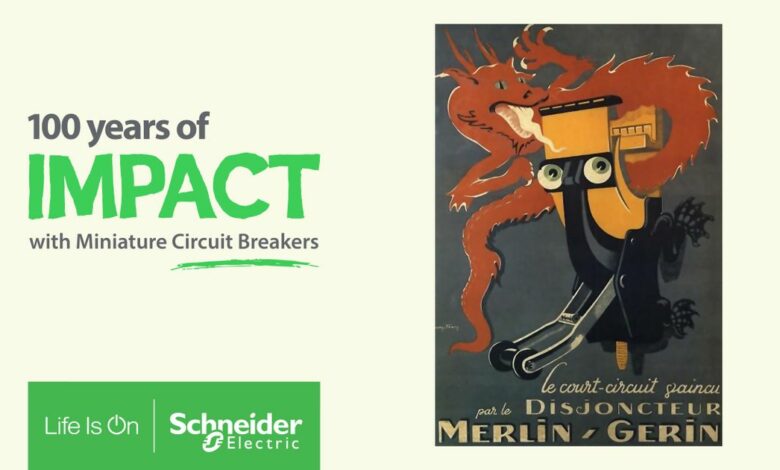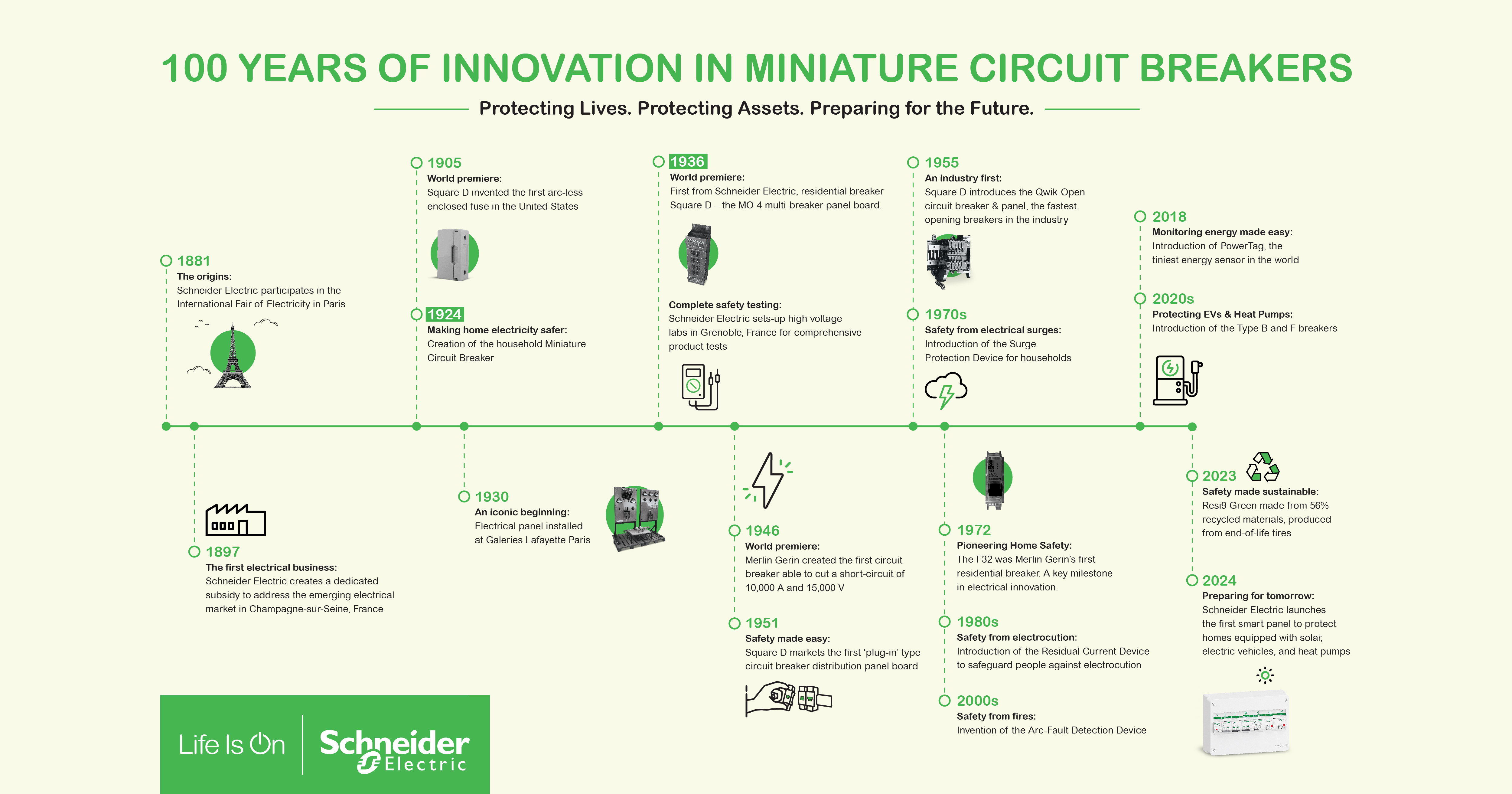Home switches: 100 years of safety

You walk into a room and turn on the light. Do you ever think about what it takes to power the light bulb when you flip that switch? Or how our electrical outlets are always ready to charge our smartphones? No — we just expect these things to happen, and to happen safely, without thinking about it. A century ago, after years of innovation and technological improvements, the miniature circuit breaker was introduced to safely bring electricity into homes for the first time. This year, Schneider Electric is celebrating 100 years of these unsung heroes of home energy safety. Here’s why you should too.
Miniature switches are located at the heart of the home, in the electrical panel where power is received and supplied to the various outlets, switches and devices we use every day. From our alarm clocks to our electric vehicles, to the smartphone in our pockets that connects us to the world. However, a Schneider Electric survey of 9,000 consumers in seven countries revealed that 41% of Gen Z don’t know what this crucial piece of technology in their home is for. What’s more, 25% of Gen Z respondents don’t even know where the electrical panel in their home is.
How did these circuit breakers get into the electrical panel and how did they come to resemble the boxes we all have in our homes today?
A History of Advances in Electrical Safety
Electrical innovation began in the early 1800s. Founded in 1836, Schneider Electric spent 150 years pioneering developments in electrical safety. The circuit breaker, which entered homes in the past century, has allowed us all to live safely and happily without even realizing it was protecting us. It safely shut off the power if water spilled on a multi-outlet extension cord, and it prevented it from overheating if too many appliances were plugged into the same outlet.
And as technology evolved, so did the protection they provided. The introduction of surge protectors and GFCIs in the 1970s and 1980s made it safe to watch TV during a major storm — people before then couldn’t watch TV during a storm! Electrical protection continued to evolve, making your relaxing bath safe while your partner used their hair dryer, and crucially, protecting curious toddlers playing with electrical outlets from deadly electrocution. In the 2000s, arc fault detection was introduced to provide additional fire protection by shutting off the power when it detected the flow of current through the air between two conductors.
Engineers at Schneider Electric have been working to improve electrical safety in your home for years, so you don’t have to think about it. Perhaps the best testament to these engineers’ efforts is the people who don’t know the role of their electrical panel!

Celebrating the past while innovating for the future
Lack of awareness around electrical safety has been the norm for decades, but home electrical needs are changing. This new era, sometimes referred to as Electricity 4.0, represents a more sustainable, smarter way to approach energy distribution, designed to address advanced technological and critical challenges, including resilience and the climate crisis. Understanding how our home electrical distribution system functions is a critical first step toward a greener, more sustainable grid.
Homes are evolving with more electrification in response to this new energy landscape. Solar panels, EV chargers, and heat pumps are now becoming more commonplace in homes, meaning the role of that electrical panel has never been more important. However, there’s a critical point that less than half of consumers surveyed realize: the more you electrify your home with solar, EVs, and heat pumps, the greater the strain on your electrical panel, increasing the risk of overloading it. Potentially putting your family, home, and possessions at risk.
This change comes as more Gen Y and Gen Z become homeowners. This portends a huge demand for new energy technology and therefore a widespread need for advanced electrical panels to keep those homes safe. Most homes in the United States were built before the 1980s, and only a small percentage of those homes have been upgraded to meet current safety standards. Improving electrification can help decarbonize your home, but the pressure can be dangerous with outdated panels.
“The electrification of our homes is undeniably a positive step toward a more sustainable energy future. This shift, driven by renewables, allows us to address the 20% of global emissions produced by homes. But as exciting as the transition to a new energy landscape is, it is vital that safety is at the center,” said Michael Lotfy Gierges, Executive Vice President of Global Home & Distribution Division at Schneider Electric.
Modern problems require modern solutions
Upgrading your home’s electrical panel can seem daunting, but it will become necessary as you increasingly electrify your home. To keep your home safe, Schneider Electric has electrical panel solutions that can bring your home up to modern standards with high-performance hardware and advanced software. For the European market, the Resi9 Energy Center offers enhanced security, safety, and sustainability for those who want to move from consumer to prosumer — someone who both uses and produces electricity in their home — with solar panels, for example, or someone who adds larger loads, such as an EV charger, to their home.
For those in the US looking to modernize their homes, Schneider Electric will soon launch its first smart panel, Schneider Pulse. The Schneider Pulse panel integrates securely and directly with solar, batteries, and inverters from multiple manufacturers, including the soon-to-launch Schneider Home ecosystem.
These developments in residential electricity distribution represent another successful step in electrical engineering to ensure that homes meet today’s electricity needs without compromising what really matters: your safety.
“Leveraging our 188 years of experience, 150 of which dedicated to the electrical market, our innovative smart panel solutions for the home offer a true evolution of the electrical panel. We are proud to introduce solutions that support the electrification of today’s homes, while prioritizing safety, resilience, efficiency and sustainability,” said Gierges.
Schneider’s purpose is to empower people to be more sustainable and turn ambitions into action. Whether you’re adding solar panels and electric vehicle charging stations to your home or switching to more sustainable heat pumps and induction cooktops, Schneider Electric’s ecosystem of global offerings is designed to advance smarter, safer home electricity distribution for everyone.




